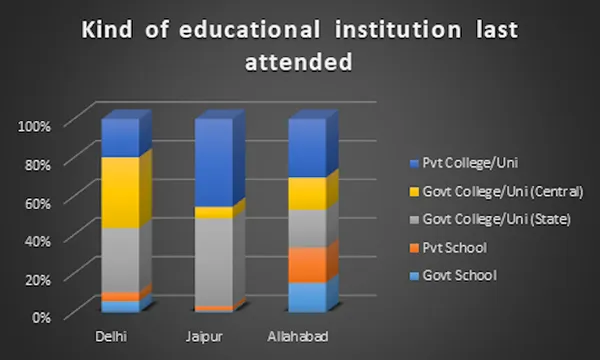
For many aspirants of the NIACL AO exam, the Quantitative Aptitude section is often a challenging hurdle. It’s a test of numerical prowess coupled with the ability to apply logical thinking under time constraints.
One effective strategy to confidently navigate this section is to engage in the NIACL AO mock test regularly.
This approach familiarizes candidates with the exam format and hones their problem-solving speed and accuracy, which are necessary for success. So, this article explores how you can tame the quantitative aptitude section of the NIACL AO exam.

Decoding the Quantitative Aptitude Section
Quantitative Aptitude is more than just number crunching. It evaluates a candidate’s ability to handle numerical data, understand logical sequences, and apply mathematical concepts effectively.
This subject covers a variety of questions including averages, percentages, compound interests, and many more. Candidates should focus on improving their analytical and logical skills to perform well in the exam.
Experienced teachers recommend solving as many questions as one can to build a strong foundation of the subject. The right preparation strategy and regular practice will surely increase your chances of succeeding in the exam.

Interesting Fact
The above graph shows the data about govt job applicants and their last attended educational institute. In this study, 80% of the respondents of Delhi reported their educational language medium as English.
Core Topics and How to Master Them
There are many topics and subtopics in the quantitative aptitude section. Practicing and learning the main topics, again and again, will benefit you more than learning random topics.
Here are the core topics of the quantitative exam and guidelines to master them.
- Data Interpretation: These questions, involving charts, graphs, and tables, require quick analysis and interpretation. Mastery in this area can be achieved through practice and by developing a knack for spotting data-set trends and patterns.
- Number Series: A pattern recognition test, these questions can be tricky. Regular practice with different types of series and understanding underlying sequences are key to cracking these problems.
- Simplification and Approximation: Knowing BODMAS rules (Bracket, Orders, Division, Multiplication, Addition, Subtraction) is fundamental here. Regular practice in simplifying complex expressions can immensely improve problem-solving speed.
- Arithmetic Operations: Topics like percentages, ratios, interest calculations, profit and loss, and time-work problems form the backbone of this section. A clear understanding and application of basic arithmetic principles are required to excel in these areas.
DO YOU KNOW?
Quantitative aptitude is tested in exams to analyze the mathematical and analytical ability of the candidate. This subject helps you in each step of life and career, irrespective of the industry you choose.
Strategies for Effective Preparation
Everyone puts hours into the preparation for this subject, but only a few people get good marks on the exam. The quality of your learning mostly depends on the strategies you follow during the learning process.
Here we are mentioning the best strategies for preparing quantitative aptitude after consulting expert teachers in the field.
- Conceptual Understanding: Start with a clear understanding of basic mathematical concepts before moving on to complex problems.
- Practice and Persistence: Regular problem-solving is vital. The more problems one solves, the better one becomes at identifying patterns and shortcuts.
- Time Management Skills: Efficient time management can make a significant difference. Practice solving problems faster and learn to identify which questions to attempt first.
- Shortcut Techniques: While traditional methods are vital, learning shortcuts and tricks can greatly reduce calculation time.
Leveraging Mock Tests
Regular practice through the NIACL AO mock tests is invaluable. It helps in familiarizing oneself with the exam pattern and identifying areas of strength and weakness. Post-mock test analysis is required for continuous improvement.
Handling the Pressure
The time-bound nature of the exam can induce stress. It’s necessary to develop a calm mindset and tackle each question methodically. Stress management techniques like deep breathing can be helpful during preparation and the exam.
The Importance of Regular Revision
Revising topics regularly ensures that formulas and concepts are at the fingertips when needed. This reduces the chances of blanking out during the exam.
Moreover, systematic revision helps build a stronger understanding of complex topics, making applying them in different problem scenarios easier.
It also aids in identifying any recurring mistakes or areas of weakness, allowing for targeted practice and improvement.
Staying Motivated and Focused
Maintaining motivation throughout the preparation phase is necessary. Setting small, achievable goals can help in keeping the momentum going. Remember, every correctly solved question is a step closer to the goal.
Conclusion
Mastering the Quantitative Aptitude section in the NIACL AO exam requires a blend of solid foundational knowledge, consistent practice, strategic planning, and mental fortitude.
Regular engagement with the NIACL AO mock test plays a vital role in this process, equipping candidates with the necessary skills to excel. With dedication, patience, and the right approach, conquering this challenging section is well within reach.
The journey might be demanding, but the rewards of perseverance are immense. So, stay focused on the goal, and success will surely follow.